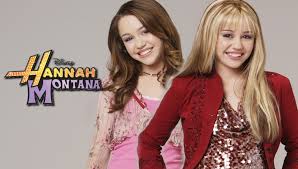
In the popular children’s TV show, Hannah Montana, there is an overarching idea of the “double” or “doppelgänger.” In the show, a regular fourteen-year-old girl, Miley Stewart, is secretly living a double life as a pop star. This pop stars name being Hannah Montana. Miley and Hannah are theoretically two different girls but what separates them the most is appearance. While Miley dresses like a normal teenage girl, simplistic and cute, Hannah dresses in sparkly outfits that are very showy and draw your attention. What puts it over the top, is the bright blonde wig Hannah wears. Miley tries her best to keep “Miley” and “Hannah” separate from each other, however, there is a sense of an “alter ego.” This alter ego is a result of the fact that Miley did not want to be in the public spotlight as herself. Rather than this be a doubling, it is simply duality. Therefore, Hannah is the alternative personality to Miley. While the two identities are separate, their traits are extremely similar. This leads into the idea of the divided self. Miley wants to be two girls at the same time. She wants to be both popular with millions of fans that love her but also just a normal girl living a normal life with her best friends and family that love her. Miley’s alter ego allows her to gain fame without having to be who she truly is. Normally, an “alter ego” provides a negative connotation, but in this instance it happens to be positive. Miley gets to be a normal teenage girl but also gets to be this alluring pop star with her alter ego. The true allure to this TV show is that by drawing in a younger audience, it is easier to fool them into thinking this girl and her alter ego are truly two different people. This concept is then misleading to the younger audience. It teaches young girls, specifically, to not be who they truly are. In a sense, it teaches them to hide their identity rather than be their overall true self with every single quality that makes them who they are.
Comments by Presley Ringling